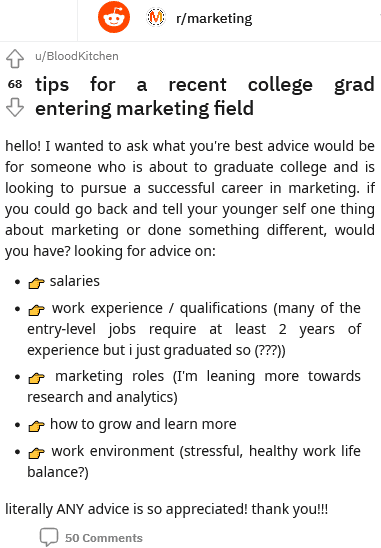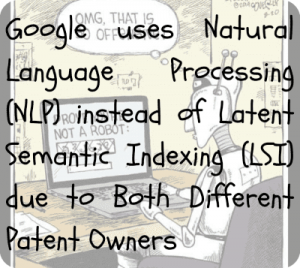Acing the art of negotiation -Insights from "Never Split The Difference"
Let's be honest here. Negotiation has never been an easy task. The situation makes people uncomfortable and induces anxiety. Our primal response of 'fight or flight' kicks in, and we end up settling for mediocrity. We don't compromise because it's right; we compromise because it is easy and saves face.
With every aspect of our life being influenced with small negotiations along the way, it's better we brush up some skills to save ourselves from lifelong regrets and 'WHAT IFs'.
A short read of 260-odd pages co-authored by Christopher Voss and Tahl Raz, 'Never Split the Difference' is filled with interesting anecdotes and actionable insights that will equip you with life-changing strategies.
Remember - being right isn't the key to a successful negotiation - having the right mindset is. Here are some of my learnings that you may find useful:
1. Why the old 'win-win' mindset doesn't work
We all have been there. The 'win-win' mindset only works if you're dealing with close friends and don't mind compromising in good faith. This mindset in business and political world is often disastrous. It satisfies neither side. If the opposition party is of 'win-lose' approach, you're sure to lose. Just remember, 'no deal is better than a bad deal!'
2. Use 'MIRRORING' to your advantage
Our biggest challenge is that we get easily distracted. We engage in selective listening, hearing only what we want to hear.
The best way to ensure active listening is through MIRRORING. MIRRORING is a powerful technique wherein you just repeat last 3 words of the speaker. It is an art of showing familiarity, which facilitates bonding. It keeps people talking, which buys you more time. It also establishes trust and other party believes that you understand them.
3. 'Tactical Empathy' is the way to go
Avoid sympathy. Use tactical empathy instead. It helps you get closer to someone without asking them nonsense stuff about their family, pets etc. It's a shortcut to intimacy, a time-saving emotional hack.
How do you use it?
Use tactical silence
• Don't underestimate the power of silence. Whenever the other party finishes conversation, don't just jump with your side of argument. Take a short pause. This will imply that you've been eagerly listening and weighing the opinion of the other party
Apply LABELING
• LABELING is a process where you acknowledge concerns of the other party. You can also use labeling to diffuse any negative in the beginning. It could be your behavior or your decision that might've made you appear like a jerk to the other party
• Think of all the worst negative things the other can accuse you of. And then, use LABELING to clear out all the doubts and the friction that is pushing the deal farther away
• Here's an example- Your business associate is hesitant to close the deal. You sense that uneasiness even before they say it out loud. This is when you apply LABELING. You confront them by saying, "it looks like you are hesitant to close the deal because you find it less profitable (or whatever the reason)". You can start your sentences with- "IT SEEMS LIKE…", "IT APPEARS THAT…." etc. It might feel awkward in the beginning, but you'd get used to it pretty quick
Apply MISLABELING
• The methodology is similar to LABELING, though a little more aggressive in its approach.
• Instead of correctly labeling the other party's fears, you take it up a notch and raise hypothetical concerns which practically don't exist. What this will do is make the other party more defensive. They will take extra steps to open up and correct you with their actual concerns. Hence, you gain insights that were not visible earlier
4. Beware 'YES' - Master 'NO'
We all think of 'YES' as a desired positive affirmation that can seal all the deals. But in reality, it is 'NO' that starts the negotiation.
'YES' is only positive in the final stages. 'NO' starts conversations and create safe havens to get to the final 'yes' of the commitment. An early 'YES' is often just a cheap assurance.
Here's how you use this skill - You use a question that prompts 'NO' for an answer, and your counterpart will feel they are turning you down. Never gun for a 'YES' straight of the bat. For example- ask 'hope I'm not disturbing you' or 'hope this is not a bad time'. Possible answer that you will get is 'no' along with the right time/thing to do.
'NO' allows all issues come forward. 'NO' slows things down so that people can embrace their decisions and the agreements they enter into.
You can use 'MISLABELING' here as well. Just say something totally wrong. That forces other party to say 'NO' (and yes later on) and make their intentions even more clear.
If your potential employer is ignoring you, ask questions that could be answered in 'NO'. For example- 'Have you given up on my hiring process?'
5. The power of calibrated questions
The most important ammo in your arsenal. If applied correctly with the skills mentioned above, you'll get to hear the most powerful two words - 'THAT'S RIGHT'
Don't confuse 'THAT'S RIGHT' with 'YOU'RE RIGHT', they technically mean different things. 'THAT'S RIGHT' implies that the other party agrees with your universal notions, whereas 'YOU'RE RIGHT' just means that the other person acknowledges your personal concerns but won't necessary agree to it.
Rules to follow:
• Ask calibrated questions using 'HOW' and 'WHAT'. Make sure you frame your questions in a way that they can't be answered with a simple 'YES' or 'NO'
• Avoid 'WHY' since it sounds like an accusation. Instead of saying 'WHY DID YOU DO IT?' you can say 'WHAT CAUSED YOU TO DO IT'? But when the situation demands for a 'WHY', use words like 'PERHAPS', 'MAYBE' or 'I GUESS' as they take the aggression out of the confrontational argument
• After hearing the other party's reasoning, Trigger 'THAT'S RIGHT' with a summary. Paraphrasing + labeling = summary. This will make people think that you understand them. They will eventually open up more
• When verbally assaulted, don't fire back. Ask calibrated questions. 'WHAT MAKES YOU SAY THAT'. 'WHY DO YOU BELIEVE SO?' 'HOW IS IT EVEN FAIR?'
6. There's always a leverage
Negotiation is never a linear equation where you apply X to get Y. We all have irrational blind spots, hidden needs, and undeveloped notions.
To get the real leverage, convince your business partner/employer that they have something concrete to lose if the deal falls through. The Prospect theory says that people are drawn to surety, even if probability is a better choice. People will take greater risk to avoid loss than to achieve gains.
Rules to follow:
• Use the power of odd numbers. They sound more believable
• Use the fear of deadlines to your advantage. Deadlines are a self-made infliction that kills more prospects rather than enhancing efficiency. Hence, always keep your deadlines secret.
• When negotiating a salary, always quote in a price range. The lower amount in the range should be higher than your expectations. This way, you set the anchor at the right position. Word of advice: mostly let the other side anchor monetary negotiations first. If the negotiation proves tough, pivot to non-monetary things like parking spot availability, early appraisals, flexible working hours etc
• If you're an employer; set a target price. Offer 65% of that price. Progress to 85, 95 and eventually 100% (if the person is really deserving) with using empathy and lots of other ways of saying no.
7. Execution is everything
Without execution, all theories and self-help books are empty promises. Our focus should go beyond the mere act of negotiating the agreement. It is only with successful execution in later stages that negotiation succeeds.
Rules to follow:
• If body language and words don't match, confirm the deal once again
• The Rule of Three: get someone agree to the same thing thrice. It's hard to repeatedly lie or fake conviction. First time, just ask directly. When it's the second time, paraphrase the agreement to get the response 'that's right'. For the final time, ask a calibrated question on the lines of "how are you going to deliver this?"
8. Some points to remember
Miscellaneous tips in the book:
• Honest conflict is necessary to solve problem via collaboration
• No matter if its an office or dinner table, there will always be a conflict. Deal with it. It will get you the best job, best car, best partner, and best everything
• Experienced negotiators delay making offers. Best way to deal with them is to warn them of other offers you might be having and create a fear of deadline
• Similarities play a huge role. Use your common connections, city, upbringing etc. to your advantage
I Want to Cut an SEO Agency Its Almost 6 Months Not Any Increase in My Organic Traffic






